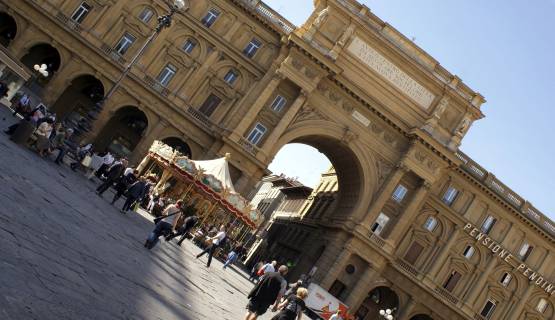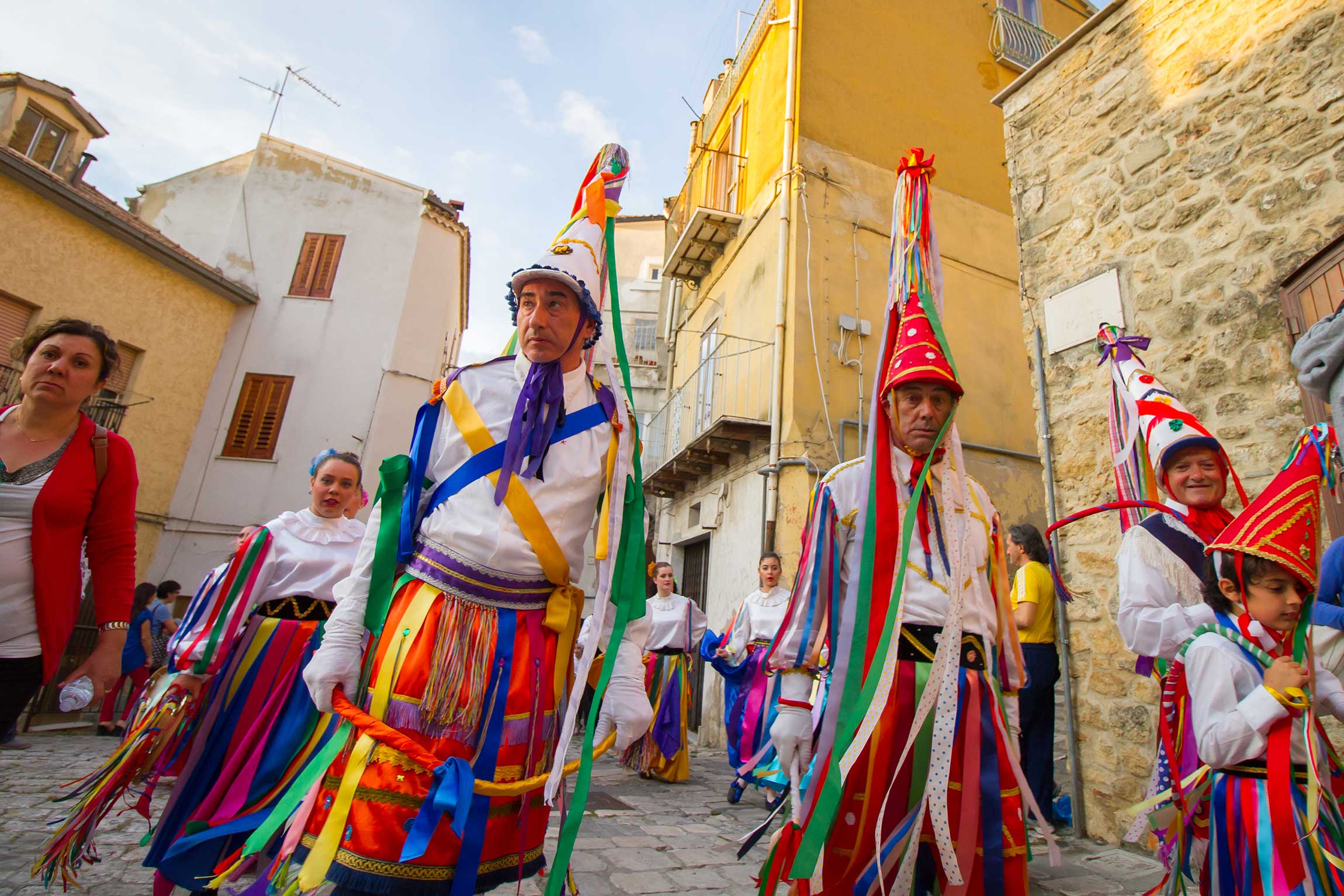 Tricarico: the Carnevale (Photo: illpaxphotomatic/Shutterstock)
Tricarico: the Carnevale (Photo: illpaxphotomatic/Shutterstock)Carnevale is here! It’s a time of joy, feasting on delicious food and enjoying your friends’ company, possibly dressed up in fun costumes. The Italian tradition of Carnevale is renowned around the world: who isn’t familiar with the Carnevale di Venezia, that of Viareggio, or that of Putignano? There is so much creativity, tradition, and joy de vivre behind each Carnevale’s characterization and performance, everywhere in the country. Because, yes! Each town and village celebrates its own way. There are some places, though, where Carnevale is even more creative and peculiar than everywhere else, sometimes because of people’s ingenuity, sometimes because of local history and a desire to keep it alive.
This is the case, for instance of Madonna di Campiglio’sCarnevale Asburgico, or Habsburg Carnival. Now, ski bunnies are definitely familiar with this quaint Alpine village of just above 800, beautifully located at 1,553 meters (just about 5,000 feet) on the Brenta Dolomites, in the province of Trento. Madonna di Campiglio is home to this special historical reenactment that takes place every year during the weeks of Carnevale. Inspired by the figure of famous Princess Sissi, who loved the mountains and Madonna di Campiglio in particular, the Carnevale Asburgico lasts for seven full days and includes parades in period costumes, the Emperor’s Grand Ball – also in costume, of course – and the sciata imperiale, when skiers in full period gear ski down Madonna di Campiglio’s white slopes. While you are here, you may enjoy some local grub, too: think of polenta, cheeses, and homemade sausages, as well as pumpkin soups and walnut and apple cakes.
Not too far from Trentino, in Friuli Venezia-Giulia, we find the Carnevale di Sauris.Sauris has recently become the recipient of the United Nations World Tourism Organization’s Best Tourism Village award, which means the locale managed to bring together love for its traditions and heritage, with sustainability and technology. Sauris’ Carnevale is all about folk dances, traditional characters, bonfires, and nighttime walks through the village under the warming light of old-fashioned lanterns. At the heart of all celebrations are the village’s maschere, the Rolar, a soot-covered man, dressed in black and with a belt made of rattles, and the Kheirar, a rather grotesque character bearing a wooden mask and carrying a broom, with which he swipes away negativity. But the Carnevale di Sauris reaches its climax with the Notte delle Lanterne, the night of lanterns when the village is warmly lit by the traveling lanterns of locals walking its streets and alleys. The walk ends in the nearby woods where the community lights a propitiatory bonfire to bring warmth and positivity to the area. If you are a buona forchetta, and you have a penchant for good cheeses and smoked cold cuts, you’ll find certainly something to enjoy at lunch in Sauris, which is known for both!
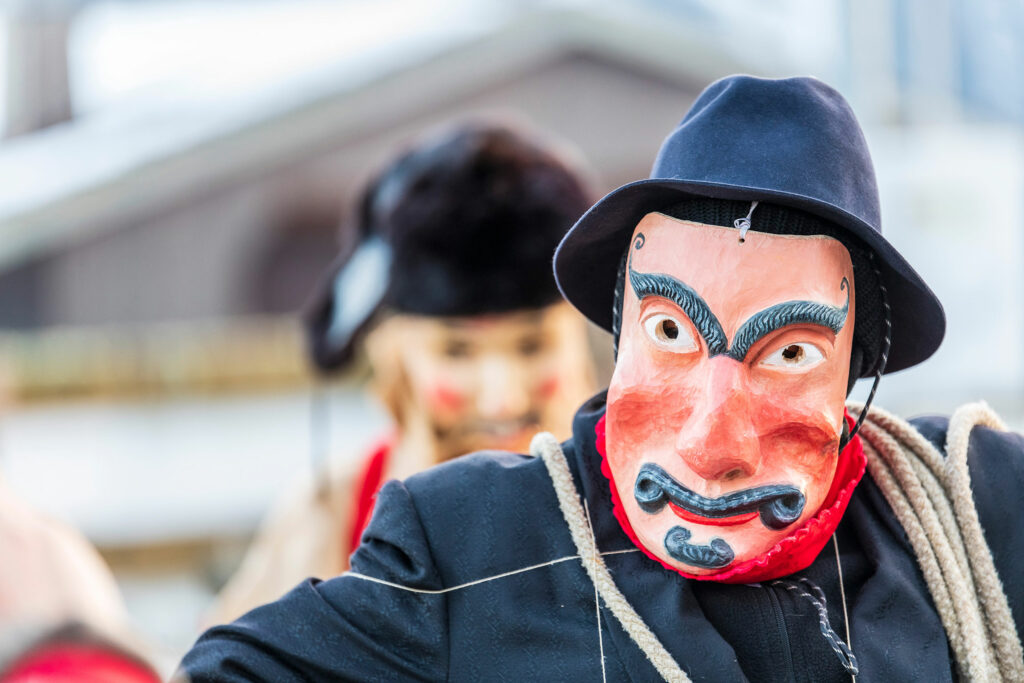
Let us move south, to the beautiful – and to many mysterious – region of Basilicata. Home to the mesmerizing and history-filled Matera, Basilicata also brings to life two quirky Carnevali: the one in Tricarico and the one in Aliano. Tricarico is a village of 5,000, with an Arabo-Norman heritage and one of the best-preserved Medieval town centers in the region. Perched on top of a hill, at 600 meters above sea level (2,000 ft), its Carnevale revolves entirely around the ancient tradition of seasonal transumanza, the customary migration of sheep and cows from the lowlands to the highlands and back, which takes place twice a year. During the Carnevale, participants mimic, with their costumes and movements, the process of transumanza itself, in a parade filled with joy, colors, and sounds. Here, the most important maschere are The Cow and The Bull: the Cow is dressed in white and adorned with plenty of colorful ribbons and cowbells. The second wears a black and red costume. The parade wants to symbolize and honor the power of nature and of the world of animals, revered as a source of livelihood, sustenance, and life.
Aliano is known in Italy for its connection with our literature because it was the backdrop of Cristo si è Fermato a Eboli, by Turinese writer Carlo Levi. In the book, Levi partly dramatizes the time he spent in Aliano during the years of his exile for having voiced his dislike for the Fascist party. Aliano is also known for its proximity to the breathtaking calanchi, a geomorphological phenomenon caused by the effects of water erosion on degraded sedimentary rocks, known in English as badlands. Aliano’s Carnevale is all about traditional horned maschere made with papier maché, known as cupa cupa, that were believed, in the olden times, to keep the Devil and negativity at bay. Part of the parade are also the Pacchiane, women in local costumes. Food-wise, Aliano and Tricarico offer a wide array of traditional dishes, including baccalà with dried peppers in Tricarico, and frizzue, a homemade type of pasta served with pork ragù and rinds, in Aliano.
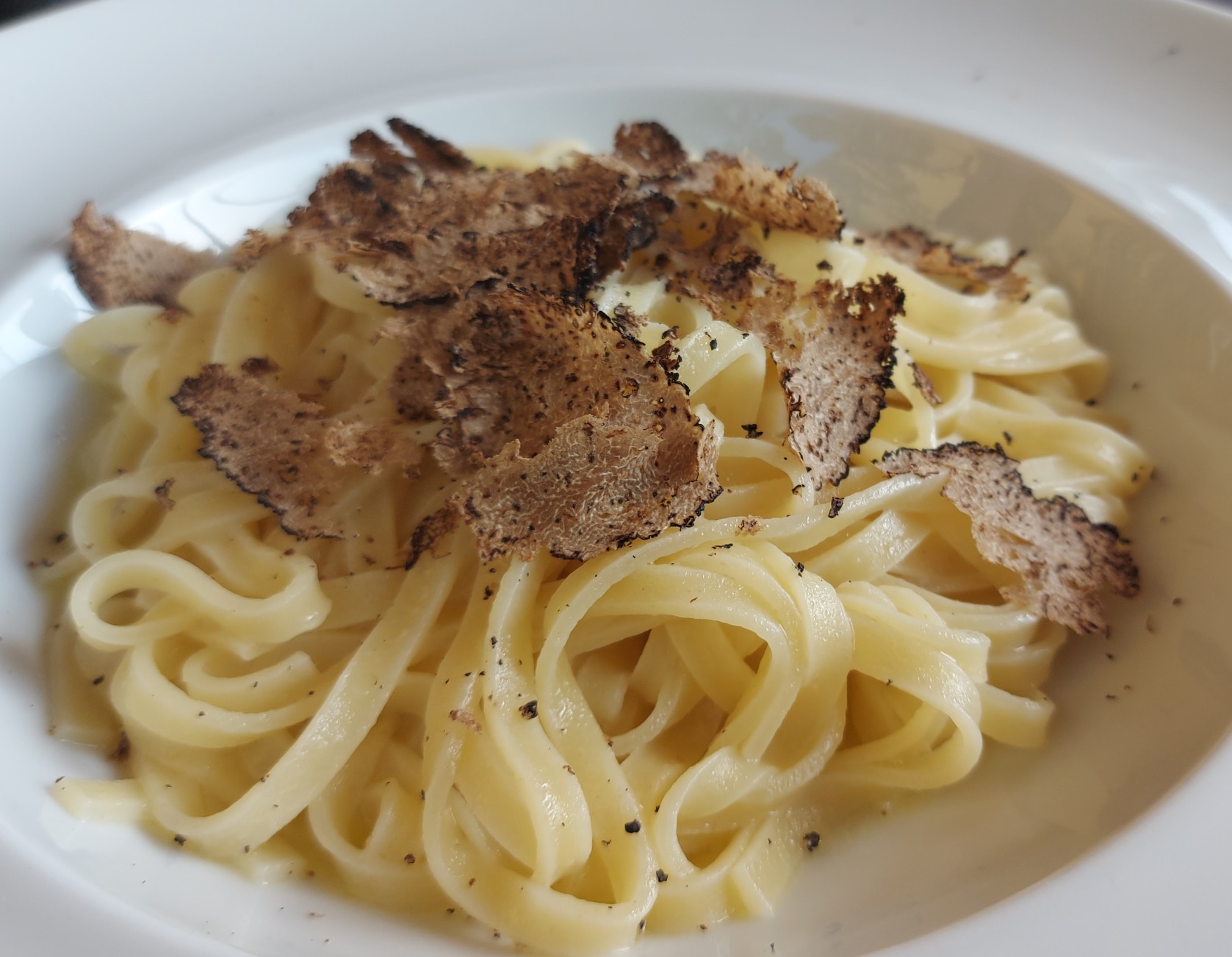 Pasta with truffles, one of the most traditional foods of Fall in Chianti (Photo: Matt Walker and Zeneba Bowers)
Pasta with truffles, one of the most traditional foods of Fall in Chianti (Photo: Matt Walker and Zeneba Bowers)Italian food, in general, is a celebration on the plate of what is seasonal and local. In Chianti, some of the best eating of the year is to be found in autumn, which is a very busy period, since it is time to harvest both grapes and olives. Here is a short list of some of the best seasonal foods to enjoy in fall in this beautiful region.
Porcini
Autumn is porcini season in Chianti, and what a beautiful season it is. These huge mushrooms are highly prized and available throughout the year in dried or frozen form, but there is nothing like experiencing them fresh. Some restaurants will sell them by weight; they’ll bring a basket of them to your table, pre-cooking, for you to choose your own, just like you might a lobster or a great steak. Oftentimes, restaurants will offer a special menu, with porcini featured in each course. In autumn, porcini are often featured in pasta dishes like tagliatelle, or in risotto, but due to their nutty, earthy taste and hearty texture, they are an excellent meat substitute, and you may also find them served as an entree or main dish.
Ovoli
Ovoli, or “Caesar’s mushrooms” are found less often than porcini, but anytime we see them we order them since we love them and they are available for only a short time. They are white on the inside, with a burnt orange or red top. They are best eaten raw, sliced thin, and dressed with a great olive oil. You will also find them in soups, but we think the best way to enjoy their delicate texture and flavor is raw.
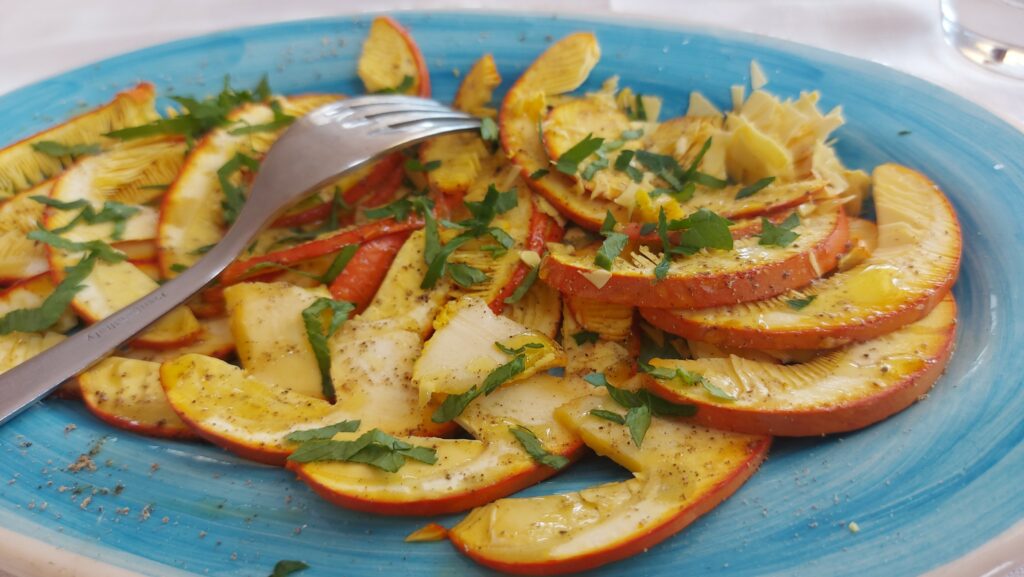 An ovoli salad (Photo: Matt Walker and Zeneba Bowers)
An ovoli salad (Photo: Matt Walker and Zeneba Bowers)
Peposo
This is a typical beef stew of the area, made with just five ingredients: beef, wine, black pepper, garlic, and salt. The stew is meant to be a little spicy so the black pepper is quite present; sometimes the stew will include whole black peppercorns, for that extra “kick.” Peposo is slow-cooked on the stove, and over time it develops a beautiful gravy, even though there is no flour in the recipe. Peposo is traditionally eaten with cannelini beans, or stewed greens like chicory or spinach.
 Peposo stew, a traditional autumnal dish in Tuscany (Photo: Evgeniya Alferova/Dreamstime)
Peposo stew, a traditional autumnal dish in Tuscany (Photo: Evgeniya Alferova/Dreamstime)
Ribollita
Literally meaning “re-boiled, this is the ultimate Chianti comfort food. This hearty soup is made from leftovers, like stale bread, carrots, celery, kale, cannellini beans, potatoes, onions, and cabbage. Like many popular dishes, it has its roots in peasant food. You may find it re-imagined in upscale restaurants in new and inventive ways, but on a crisp fall day, make sure you try the traditional, no-nonsense original version, which makes you feel full and cozy. Bonus: this dish is nearly always vegan!
Tartufo (truffles)
In the autumn, every menu in Chianti will offer several dishes that are seasoned with truffles – “al tartufo”. It’s an unusual food – they grow in certain kinds of forests, underground as a fungus, and specially-trained dogs hunt them up in the woods.
Truffles add a distinctive, deep earthy flavor to any food (pastas and risottos, meats), and a little goes a long way in terms of flavor strength – in fact, the aroma hangs in the air in any restaurant where they’re using it. It may be cooked into a pasta sauce, or it may appear thinly shaved atop the pasta, or on a steak. Though there are many different varieties, in Chianti you’ll see two main types, nero and bianco – black and white. The white is much more precious and costly, so be mindful of the price tag!
Olio nuovo (new oil)
Fall in Chianti is the time of the raccolta – the olive harvest. The specific week and month vary depending on the region, and the kind of summer the trees had.
Once the olives are picked, they’re pressed right away to yield the season’s first oil. It’s a deep, rich, bright green color, bursting with fresh peppery flavor as well as highly healthful qualities. A simple grilled bruschetta or a green salad – or a ribollita! – topped with olio nuovo becomes the richest of treats.
Schiacciata all’uva
This is a focaccia-type bread, stuffed with ripe Sangiovese grapes. It appears in bakeries in the fall, when the grapes are harvested and are quite ripe. Different variations can have extra sugar dusted on top, but most varieties are sweetened with the grapes alone. Some versions will have rosemary. Historically, this bread was a way to use up ripe or leftover grapes – a delicious “repurposing.” It has a savory element of a little salt and olive oil, and the sweet element of the grapes. It can be eaten as a dessert, an afternoon snack, or even breakfast.
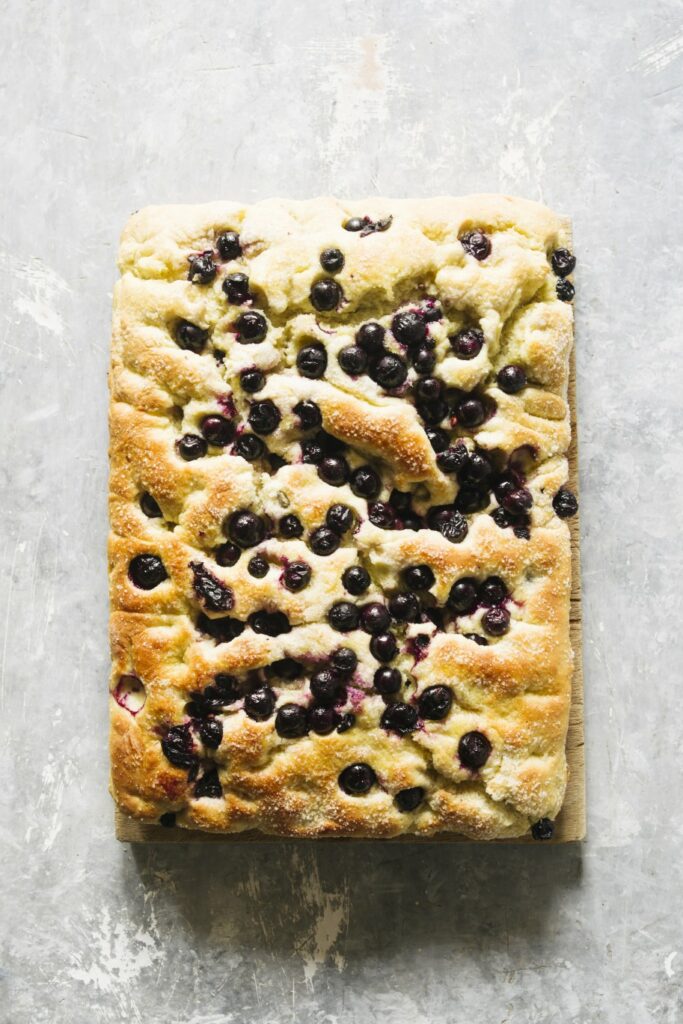 Grapes schiacciata (Photo: Jborzicchi/Dreamstime)
Grapes schiacciata (Photo: Jborzicchi/Dreamstime)
Castagne (Chestnuts)
These are harvested in autumn; you’ll find them in all the markets, which means they will also be featured in many restaurants. Chestnuts are available year-round, for example, if they are preserved in alcohol or syrup, or ground into flour (in this form, you will find them in a typical dessert called castagnaccio). But to taste their nutty sweetness in their fresh form, you need to seek them out in autumn. You will find them at festivals and weekly markets, sold for a few euros in paper cones. To roast them yourself, just score the top of each chestnut before popping them in a hot oven (425°F) for about 15-20 minutes or until you see the brown shell peel back a bit away from the white meat inside. Italian chestnuts can often be found in American markets, so you can transport yourself to Chianti for an afternoon with your own roasted chestnuts!
 Castegne (Photo: Matt Walker and Zeneba Bowers)
Castegne (Photo: Matt Walker and Zeneba Bowers)
Cavolo nero (kale)
A particular type of black cabbage (called “lacinato kale” in the United States), this dark green, leafy cabbage starts to make its appearance in markets in mid-fall and remains throughout the winter. It is an important ingredient in ribollita, and other hearty Tuscan soups. It has a bit of sweetness to it, and softer leaves than most kale found in American markets. It is also often featured as a side dish, for example, next to peposo. It can also be made into a hearty pesto for pasta, or as a topping for bruschetta.
About the authors: Zeneba & Matt moved from the U.S. to Italy in 2019, where they live and work as performing musicians. They are also authors of four award-winning travel guidebooks, and as Little Roads Europe, they craft itineraries for travelers who want to visit small towns and enjoy authentic experiences in Italy and Ireland. www.littleroadseurope.com



